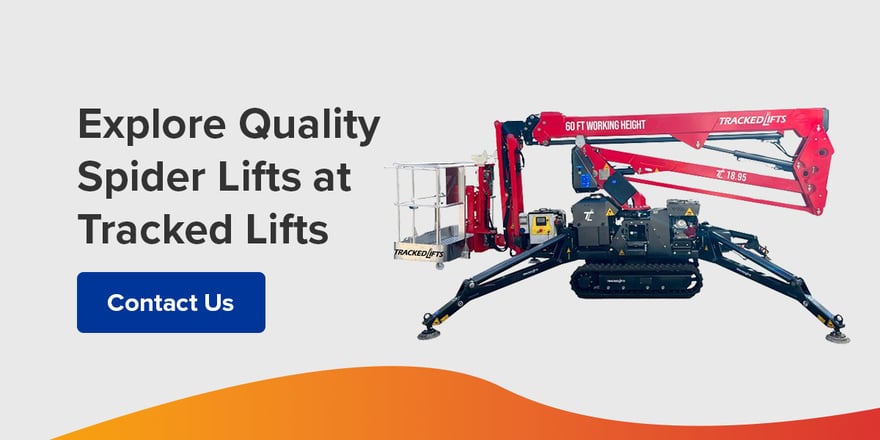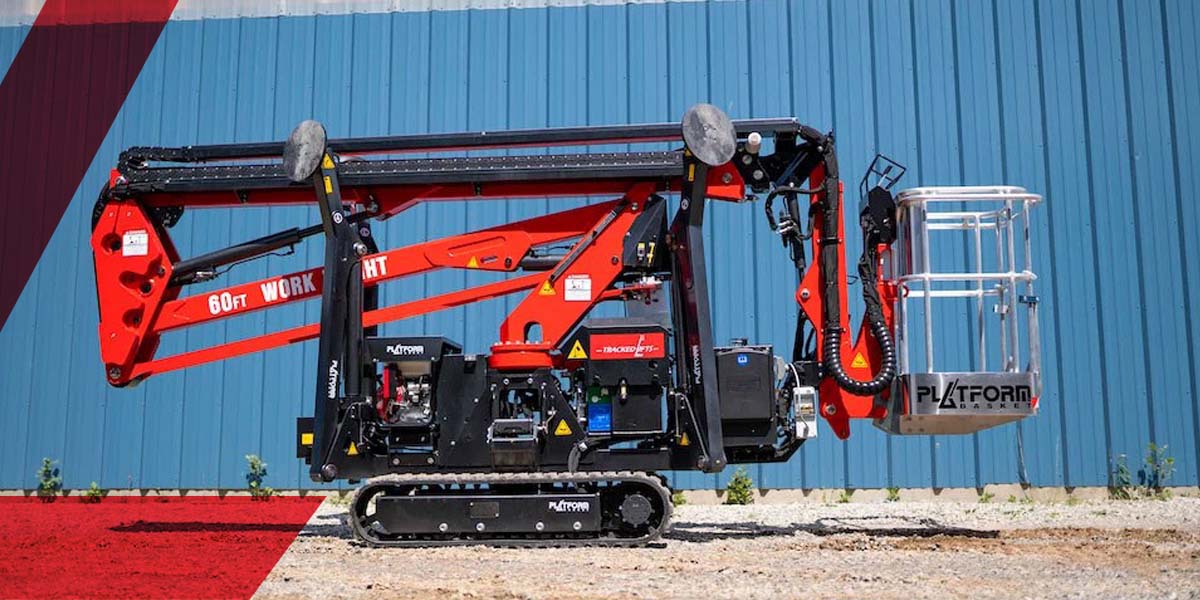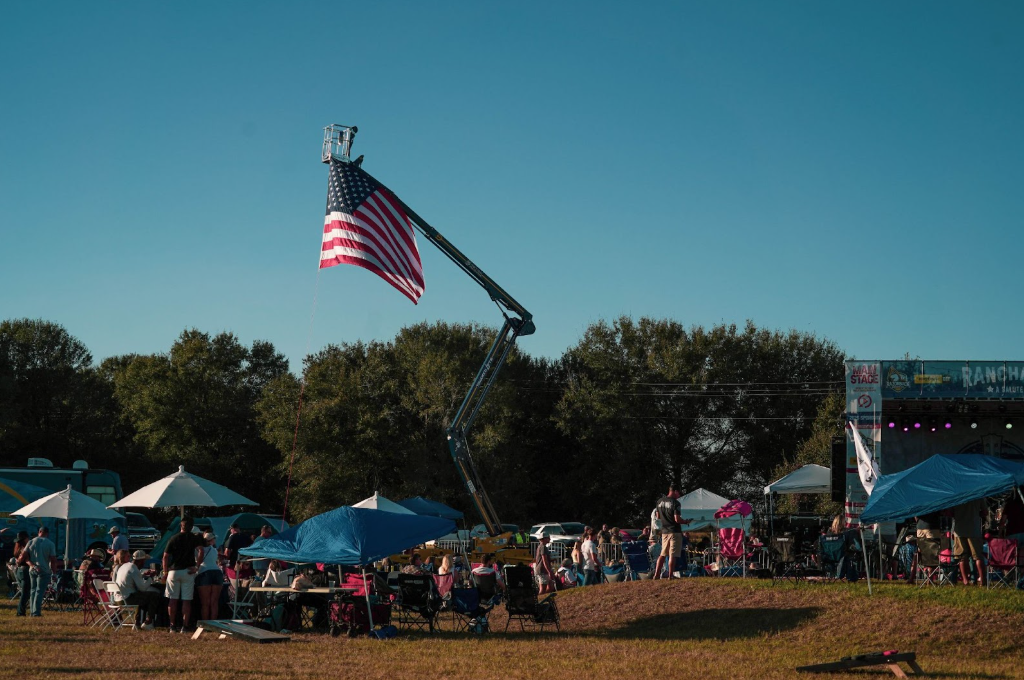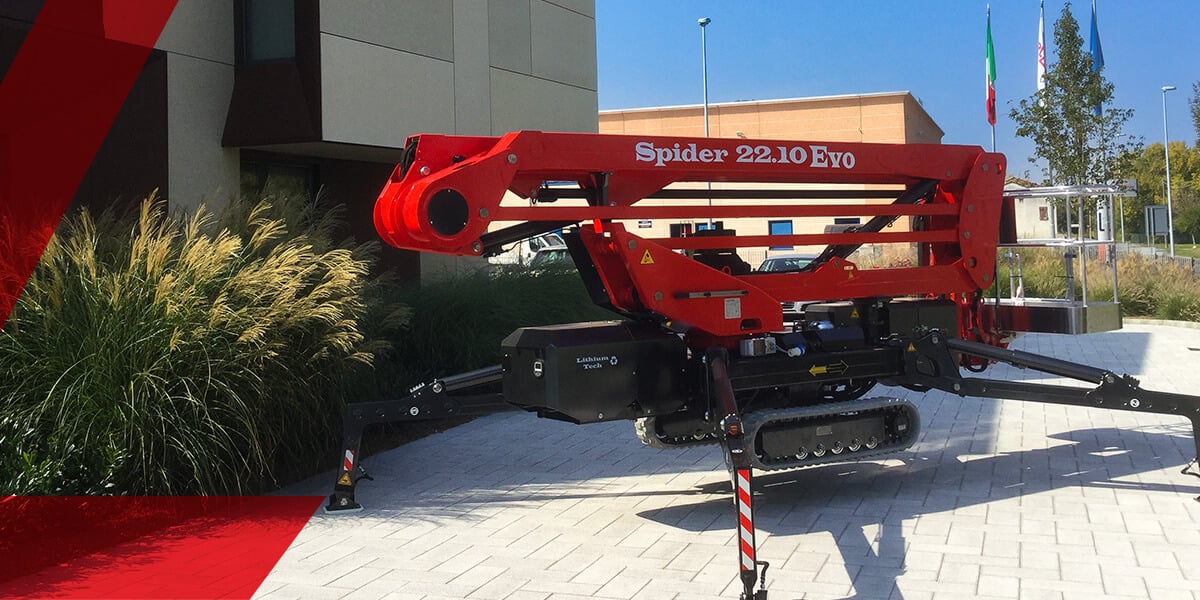Spider lifts are essential for various applications such as tree care, maintenance and construction. Aerial lifts contribute to a significant number of heavy equipment accidents, but pre-use inspections help prevent accidents, injuries and equipment downtime.
Knowing what to check during a spider lift inspection helps enhance safety and equipment longevity. Whether you own, rent or operate a spider lift, you should understand how to inspect your equipment and work area.
Who Needs to Conduct Lift Inspections?
Whether you need a spider lift for tree care, construction, facility maintenance, utility installation or aerial filming, pre-use safety inspections are important. The following types of individuals should prioritize lift inspections:
- Lift operators: If you operate a spider lift, pre-use inspection is a crucial part of protecting yourself and others.
- Equipment owners: As an equipment owner, pre-use inspections are important for protecting your spider lift's longevity and performance.
- Jobsite supervisors: Pre-use inspections help maintain workplace safety. If you manage or supervise operations, it's important to perform daily inspections or ensure your operators perform inspections.
- Rental companies: Keeping your equipment in top shape is important for a rental company's brand reputation. You should inspect a spider lift before and after each rental period to maintain a safe fleet, minimize liability and ensure client satisfaction.
- Equipment renters: While rental companies handle regular equipment inspection and maintenance for you, it's still important to check a spider lift before each use. If you notice any damage or complications, notify the rental company immediately so they can address the issue and help you prevent or minimize downtime.
Why Are Pre-Use Inspections Important?
Aerial lift inspections are a proactive way to reduce risks. They are important because they offer the following advantages:
Operator Safety
Pre-use inspections protect lift operators. Without inspection, heavy equipment can potentially cause accidents, falls and serious injuries. Inspections ensure the equipment is in safe operating condition, giving you and equipment operators peace of mind they can complete work safely.
Surrounding Personnel Safety
Inspections also protect individuals working near spider lifts. A pre-use inspection helps prevent equipment from striking or colliding with other equipment or workers.
Equipment Protection
Regular inspections and maintenance help prevent equipment damage. When you schedule inspections, you can catch minor complications before they cause significant damage. This is important for avoiding equipment downtime and costly repairs.
Importance of Choosing a Quality Lift
While inspection keeps an aerial lift in top shape, the most important safety precaution is choosing a high-quality model. Tracked Lifts offers multi-terrain tracked spider lifts to meet your needs. Our lifts are designed specifically for arborists, but they are highly useful in a wide range of applications.
Our lifts include advanced features and safety controls to protect your workers and streamline operations. With straightforward, easy-to-learn components, our lifts make inspections and operation easier. You can also depend on our lifts to operate safely on uneven ground when you use safety features such as outriggers and advanced leveling technology.
Spider Lift Safety Inspection: Ensuring the Lift Is Ready to Work
A pre-start inspection focuses on the spider lift's mechanical and operational condition. Each spider lift safety checklist should focus on the following key factors:
Manufacturer's Manual
Consulting the manufacturer's manual is vital because it provides precise inspection guidelines. It contains information about the equipment's design, specific components and proper maintenance procedures. The manufacturer's manual is the most accurate inspection source because it's written specifically for your spider lift and includes a thorough inspection checklist.
Fluid Levels
Check the levels of the following types of fluid in your spider lift:
- Fuel
- Coolant
- Oil
- Hydraulic fluid
- Battery fluid levels
Fluid levels are typically listed in the manufacturer's manual, making it easy to identify areas where you need to add fluid.
Visual Inspection
A walk-around visual inspection helps you identify the more obvious areas your spider lift may need attention. You should look for the following types of complications during a visual inspection:
- Leaks: Puddles or wet marks on the ground beneath the spider lift can indicate fluid leaks.
- Visible damage: Cracks, scratches and bends can indicate damage on a spider lift, and they're some of the first signs you may notice if equipment needs attention.
- Loose components: Loose components are another sign of damage. Confirm all nuts, bolts, pins, wheels, wires and hoses are tight and secure.
Function Test
Test your lift's functions to ensure safe, smooth operation. It's important to test all functions such as:
- Raising
- Lowering
- Extending
- Retracting
- Steering
Workplace Inspection: Identifying Hazards Before They Happen
A workplace inspection helps you assess the environment where you or your workers will use a spider lift, identifying potential hazards that could impact the lift and its operation.
Work Area Hazards to Look for
Walk through your work area to identify and address the following types of hazards:
- Tipping hazards: Hazards such as soft ground, obstacles and slopes can cause a spider lift to tip over. Make sure the ground under a lift is flat and level to prevent imbalance and tipping. Check for any changes in elevation or holes before starting operations. Multi-terrain lifts from Tracked Lifts make it easier to operate on uneven ground with features such as outriggers and auto-leveling capabilities.
- Potential obstacles: Identify potential obstacles such as other equipment, tools, nearby structures, trees and workers.
- Power lines: Working near power lines requires extra care and attention to prevent electric shock. Electric currents can reach workers or aerial lift components even if they don't directly touch a power line, so it's important to keep the lift at least 10 feet away from communication lines and power cables.
Creating a Safety Plan
Developing a safety plan is vital for avoiding potential hazards. Consider including the following elements in your safety plan to protect your operators and equipment:
- Using outrigger pads on soft ground
- Maintaining safe distances from power lines
- Considering precipitation and wind conditions in your work area inspection
- Ensuring operators and individuals working on or around the lift wear the appropriate personal protective equipment
- Establishing clear communication protocols for when equipment is in use
- Training workers to identify and address potential hazards
Purchase Quality Spider Lifts From Tracked Lifts
An aerial lift daily inspection is vital for safety and equipment longevity. When you invest in an aerial lift, you want to prevent damage and ensure it lasts as long as possible.
Tracked Lifts offers dependable lifts to help you make the most of your investment and boost efficiency. In addition to regular inspection, we believe that a lift's longevity and safety depend on its quality. Our multi-terrain lifts are purpose-built for arborists but useful in various industries, featuring industry-leading armored components, protected hydraulics and dual hydraulic redundancies.
Contact us to learn more about our spider lifts or schedule a demo.




